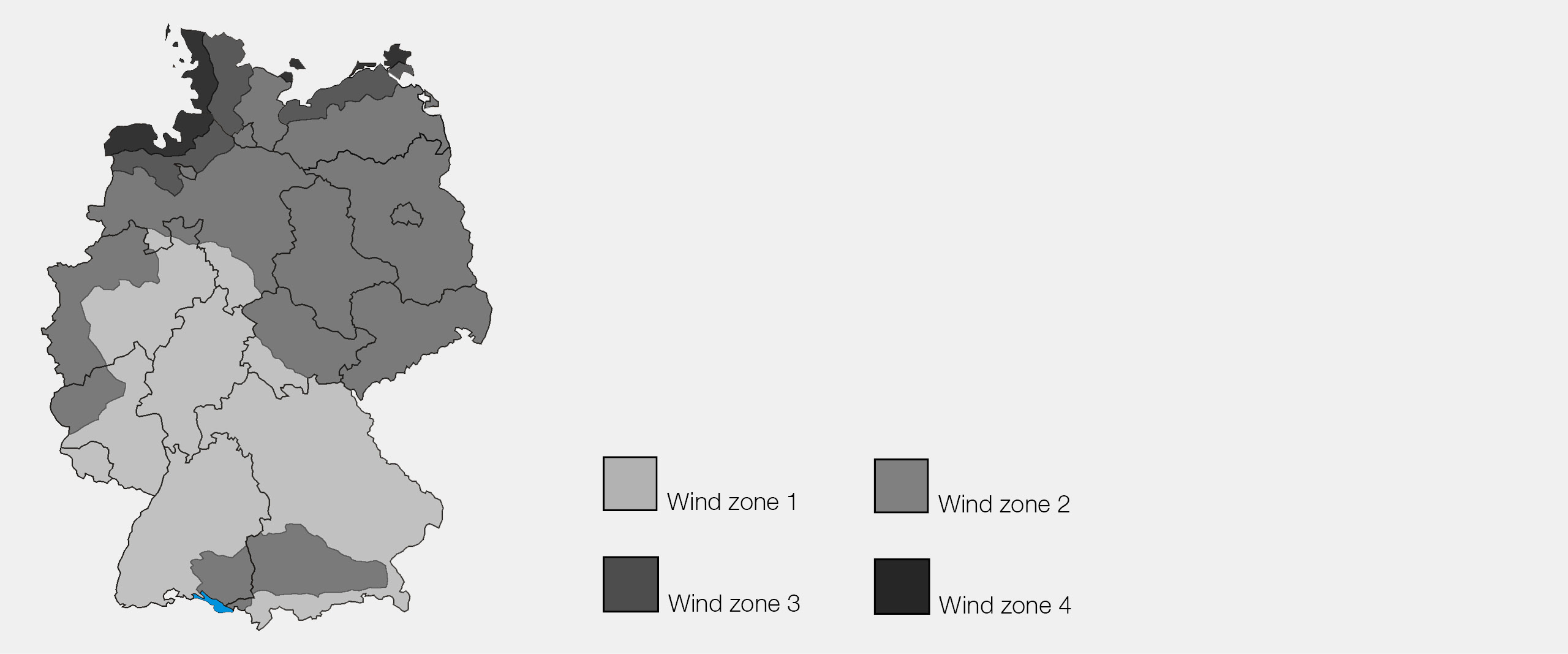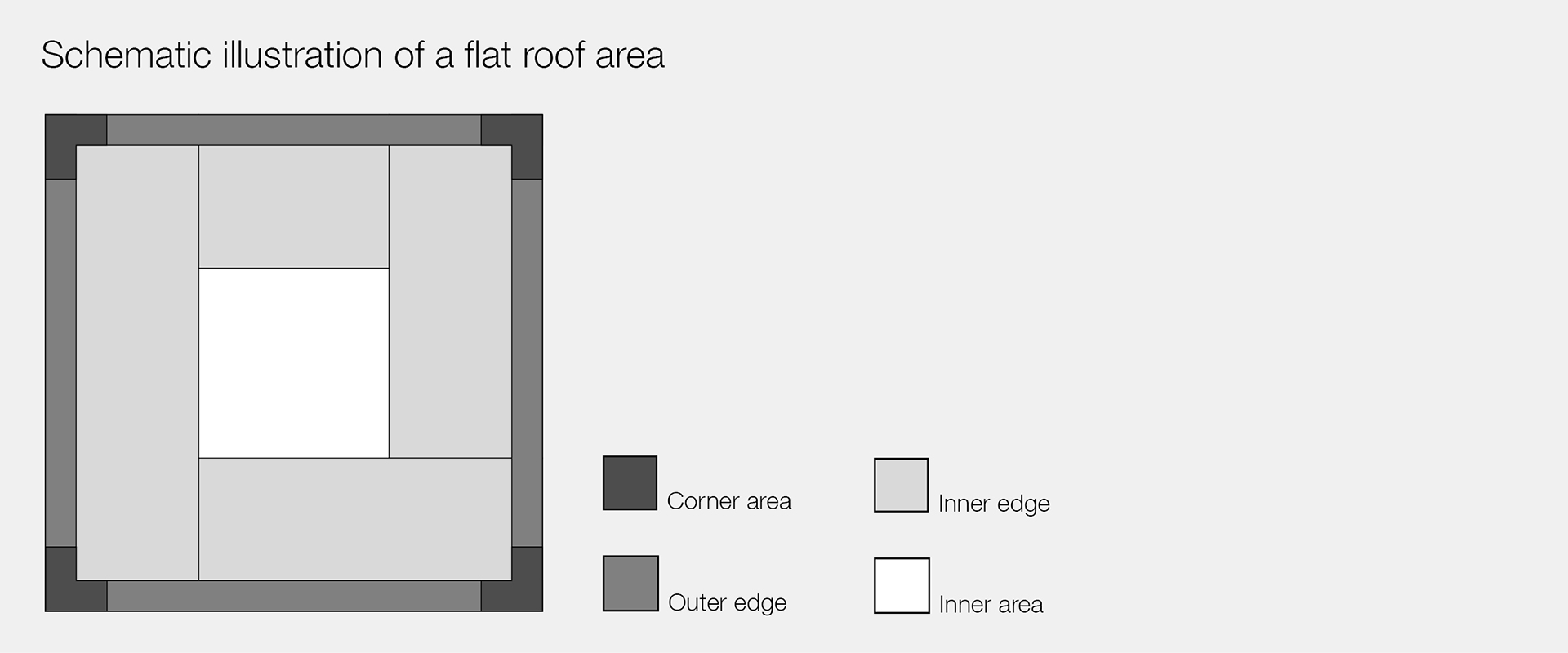Calculation of wind load
Flat Roof Guidebook – Part 5
The flat roof guidebook has already dealt with the basics of planning a flat roof, the difference between flat and pitched roofs, the structure of a flat roof, different types of anchoring with roofing membranes and the topic of initial sizing including the wind uplift test.
After the successfully completed wind uplift test (already discussed in the previous part of the flat roof guide), EJOT will provide the client with a test report with the system design including all individual components, correction factors and partial safety factors. The design value of the load-bearing capacity determined on the basis of the test report provides one of the bases for static verification. The current edition of our guide will deal with the wind load performance in detail and show which information is absolutely necessary for performance.
After the successfully completed wind uplift test (already discussed in the previous part of the flat roof guide), EJOT will provide the client with a test report with the system design including all individual components, correction factors and partial safety factors. The design value of the load-bearing capacity determined on the basis of the test report provides one of the bases for static verification. The current edition of our guide will deal with the wind load performance in detail and show which information is absolutely necessary for performance.
Wind zone and terrain roughness
First of all, the wind zone is crucial. Germany is divided into four wind zones and differs significantly from central Germany to the coastal area. The wind zones are defined in the national annex of DIN EN 1991-1-4. The geographical location of the building determines the applicable wind zone. A list published and regularly updated at the DIBt (German Institute for Building Technology) contains an allocation of the wind zones according to administrative boundaries and is clearly assigned on the basis of the municipality code number. Furthermore, it must be specified which terrain roughness exists at the building's location. Four terrain categories are defined:
The German national annex of DIN EN 1991-1-4 shows a way to determine the gust velocity pressure using control profiles. Control profiles are inland, coastal areas, as well as islands of the Baltic Sea and as a third profile, the islands of the North Sea. This classification is very popular.
- Terrain Category GK I: open sea, lakes with at least 5 km of open space in the direction of the wind; smooth flat land without obstacles
- Terrain Category GK II: terrain with hedges, individual farmsteads, houses
- Terrain Category GK III: suburbs, industrial or commercial areas
- Terrain Category GK IV: urban areas where at least 15 % of the area is covered with buildings whose average height exceeds 15 m.
The German national annex of DIN EN 1991-1-4 shows a way to determine the gust velocity pressure using control profiles. Control profiles are inland, coastal areas, as well as islands of the Baltic Sea and as a third profile, the islands of the North Sea. This classification is very popular.
Building Geometry
Regarding the building geometry, the key data from the ground plan, the roof shape, the roof slope and distinguishing features in the area of the roof such as the height and design of the attic are determining factors. A parapet causes changes in the flow at the roof edge and leads to a reduction of wind suction loads in the corner and edge areas. Indirectly, only information about the parapet height is required and the number of flat roof fasteners in a project can be reduced.When calculating the wind load, the roof surface is divided into four areas. The highest wind suction forces occur in the corner and edge areas. At a result, the number of fasteners is also the highest in these areas. The dimension and position of the areas can be found in the preliminary measurements prepared by EJOT.
Three sets of rules are decisive in determining the type and number of fasteners in the flat roof: the flat roof guideline, DIN 18531 as well as DIN 18338. In the next part of the flat roof guidebook, we will take a closer look at what they say and how they might differ.
Three sets of rules are decisive in determining the type and number of fasteners in the flat roof: the flat roof guideline, DIN 18531 as well as DIN 18338. In the next part of the flat roof guidebook, we will take a closer look at what they say and how they might differ.


